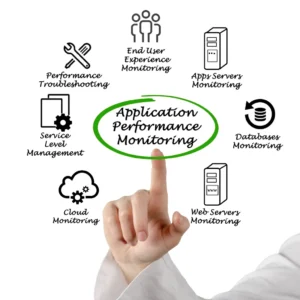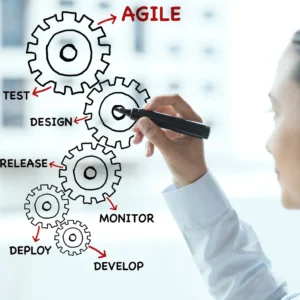
Roadblocks of IPA (Intelligent Process Automation)
Overcoming the Top 9 Challenges with Effective Mitigation Strategies
Intelligent Process Automation (IPA) can boost efficiency and productivity but integrating it can be challenging.
Learn about common obstacles and practical solutions to overcome them. Don’t let anything hold you back from unlocking the transformative benefits of IPA.
Explore the common challenges faced during the implementation of Intelligent Process Automation (IPA) and discover effective mitigation strategies to overcome these roadblocks.
Gain insights into the top 9 challenges hindering IPA success and learn how organizations can navigate the path to seamless process automation.
This article delves into the key areas where organizations encounter hurdles and provides actionable strategies to overcome them, enabling businesses to achieve improved efficiency, streamlined processes, and successful digital transformations.
Table of Contents

Arindam Roy
An Automation Consultant with 25+ years of IT Experience
Resistance to Change
To implement IPA effectively, consider employees' concerns about job loss and adapting. Use change management strategies, clear communication, and involve employees to overcome challenges.
Employee Involvement
Involve employees in IPA implementation from the start. Empower them by including them in decision-making and letting them take ownership. Their ideas are valuable and will keep the momentum going.
Celebrate Successes
Recognise and celebrate small wins and milestones during the IPA implementation. Publicly acknowledge and appreciate employees’ efforts and contributions. Celebrations create a positive atmosphere, boost morale, and reinforce the benefits of embracing IPA.
Continuous Feedback and Improvement
Encourage employee feedback on IPA’s impact and incorporate their suggestions for process improvements to foster a culture of constant improvement.
Clear Communication
IPA enhances work efficiency and promotes growth opportunities. We value transparency and support our employees throughout the process.
Change Champions
Identify and empower courageous employees who promote Process Automation. They will guide and support colleagues through the transition.
Training and Support
Provide employees with comprehensive training and ongoing support to help them adapt to IPA and feel confident using automation technologies.
Legacy Systems and Integration
Another Roadblock in IPA is Integrating it with legacy systems can be challenging, but it's possible to incorporate new automation technologies seamlessly with a strategic approach.
Pilot Projects
Consider starting with pilot projects to test integration feasibility and identify any early challenges. This allows for adjustments and refinements before scaling up process automation implementation across the organisation.
Assess Integration Requirements
Evaluate current systems for compatibility with IPA solutions. Identify integration challenges and determine necessary adjustments for seamless integration.
Data Migration and Transformation
To transition to the new IPA environment, create a robust data migration plan that ensures accuracy, uniformity, and security. Adjust data formats as needed.
Agile Integration Solutions
Simplify merging IPA and legacy systems with agile integration solutions. Opt for adaptable and expandable platforms, ensuring a smooth transition with minimal disruption.
Collaboration with IT Teams
Involve both implementation and IT teams to integrate IPA successfully. Collaboration can identify solutions and ensure requirements are understood. Plan and implement with IT teams.
Data Quality and Availability
IPA heavily relies on accurate and high-quality data. Precise only or complete data can help the effectiveness of BPA initiatives.
Data Governance Framework
Reliable IPA systems require high-quality, accurate, complete, and trustworthy data. Standards must prioritise ownership and management procedures.
Data Cleansing and Enrichment
Improve data quality with cleansing, enrichment, error correction, and integration of external sources.
Master Data Management
Master data management ensures consistent and reliable data across systems and departments.
Data Accessibility and Integration
Merge data sources for better data access. This ensures accuracy and timeliness in IPA automation.
Continuous Monitoring and Quality Assurance
Monitor data quality and integrity with regular audits and quality assurance checks. Address any issues promptly.
Scalability
Scaling IPA across an organisation can be challenging, especially in large enterprises with multiple departments and locations.
Centralised Automation Center of Excellence (CoE)
A centralised CoE dedicated to automation could provide frameworks, best practices, and knowledge sharing for successful scalability and governance.
Collaboration and Knowledge Sharing
Collaborate and share ideas to enhance IPA. A central platform can help communication.
Scalable Automation Solutions
Opt for flexible IPA solutions that can easily handle diverse processes and scaling needs.
Modular Approach
Deploy IPA modularly for gradual scaling and seamless integration.
Performance Monitoring and Optimisation
Monitoring IPA systems with KPIs leads to optimised processes and better results.
Process Complexity and Variability
Some business processes are inherently complex and involve various exceptions and variations. Capturing and automating these complex processes accurately can be challenging for an IPA implementation.
Process Mapping and Analysis
Diagramming and decision trees help understand complex procedures for accuracy.
Rules Engine and Decision Logic
Use a rules engine or decision logic framework for accurate and contextual decisions in IPA.
Simplification and Standardisation
Simplify and standardise processes to streamline workflows and reduce errors.
Iterative Approach
Start simple, get feedback, refine, and handle complexity.
Security and Data Privacy
IPA involves the processing and storing of sensitive data, raising concerns about data security and privacy.
Robust Security Measures
Protect your data using encryption, access controls, regular audits, and employee training. Show your dedication to data security to build trust with stakeholders.
Compliance with Data Privacy Regulations
Comply with data privacy regulations like GDPR or CCPA. Know your legal responsibilities for data storage, processing, and transfer, and take steps to meet compliance standards.
Data Encryption and Anonymization
Encrypt data to keep it secure. Use anonymous or pseudonymous data when possible to prevent privacy breaches.
Employee Awareness and Training
Employee education is crucial for data privacy. Our programs raise awareness and provide support.
Data Access Controls
Use role-based access controls to limit access to sensitive data to authorised personnel. Regularly review and update access permissions for maximum data security.
Lack of Expertise
Organisations may need more skilled professionals with expertise in IPA and the specific industry domain.
External Partnerships
Partnering with experts in the industry can help close knowledge gaps and ensure project success. Leverage their skills to achieve your goals.
Internal Upskilling
We aim to identify IPA enthusiasts and provide them with training and skill-building opportunities. We encourage collaboration and education to promote growth and success.
Knowledge-Sharing Initiatives
Sharing knowledge improves performance. Use communities of practice and lunch-and-learn sessions.
Participation in Industry Events
Industry events on IPA are great for learning from experts, gaining new perspectives, and expanding professional networks.
Mentoring Programs
Implementing mentoring programs can help cultivate talented professionals by allowing experienced employees to guide and mentor others in IPA.
Resource Allocation Planning
Implementing IPA requires dedicated resources, including skilled personnel, budget allocation, and time.
Cross-Functional Collaboration
Collaboration is crucial for a successful IPA. Utilise resources and expertise from various departments, share knowledge and maximise internal talent for optimal outcomes.
Comprehensive Resource Allocation Plan
Develop a plan to allocate resources for successful IPA implementation and maintenance. Consider team skills, budget, and timeline.
Prioritisation and Phased Approach
Assess the impact and feasibility of IPA initiatives. Prioritise high-impact areas and address critical areas first.
Skilled Workforce
Evaluate team skills and fill gaps for successful IPA implementation. Consider training or hiring and external help if needed.
Regular Resource Assessment
Efficient distribution and optimal results depend on closely monitoring resources and making necessary adjustments.
Vendor Selection
Choosing the right technology vendors and solutions for IPA can be overwhelming.
Comprehensive Vendor Evaluation
Be careful when choosing IPA vendors. Evaluate their past performance, expertise, adaptability, customer service, and alignment with your goals.
Proof of Concept (PoC)
Demos are crucial when evaluating IPA vendors. They help you assess the product’s usability, functionality, and compatibility in your environment.
References and Case Studies
Check customer references for vendor performance, efficiency, and support insights.
Alignment with Organisational Objectives
Choose a vendor and solution that align with your strategic goals and long-term vision. Evaluate scalability, adaptability, and plans.
Pilot Projects
Pilot projects help assess vendor capabilities before larger-scale implementation.
Conclusion
Roadblocks for IPA (Intelligent Process Automation) in an organisation may seem daunting, but the rewards are significant. Overcoming obstacles like resistance to change, integration with legacy systems, and maintaining data quality, scalability, and security are crucial.
Prioritising communication, employee engagement, ongoing improvements, and data-driven decision-making is essential. IPA offers opportunities to boost operational performance and achieve positive business outcomes.
Addressing challenges as they arise and reaping the benefits that follow is vital.
Related Articles
- Choosing the Right Automation Tool in 7 Steps
- A 9-Step Guide to IPA Implementation: Energise Your Operations
- Navigating the Roadblocks of IPA – The Top 9 Challenges
- AI in Intelligent Process Automation – Unleash the Power of AI
- 9 IPA Examples in Small-Scale Industries
- Power of Intelligent Business Process Automation – Efficiency
- AI Business Process Management: Unleashing the Power
- Business Process Management with AI Integration
- AI for Reengineering Business Processes
- Hyperautomation: Redefining BPM with AI
- The Role of AI in Business Process Modelling
- AI-driven Customer Onboarding – Unleash the Power of AI
- Effective Process mapping in Intelligent Process Automation
- Intelligent Process Automation Adoption – The Best Strategy Guide
- TechInfra in IPA: A Comprehensive Guide
- Elevating Intelligent Automation with Continuous Improvement
- Comprehensive Approach to Cost-Benefit Analysis in IPA
- Vendor Selection in IPA – Comprehensive Guide
- Implementing Agile in Intelligent Process Automation (IPA)
- Scalability and Integration in Intelligent Process Automation
- Cognitive Automation in IPA: Innovating Ethical Efficiency
- Mastering Symphony: Bot Development in IPA Unveiled
- UI/UX Mastery in IPA: Elevating Automation Experiences
- Compliance and Security in IPA – A Guide Ensuring Trust
- Impact of Performance Monitoring and Analytics in IPA
- Driving Success: Data Management in IPA
- Crucial Role: Documentation in IPA Triumph
- Optimizing IPA – Continuous Improvement Strategies























